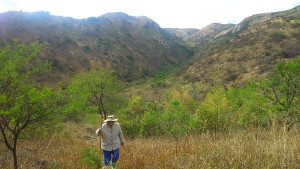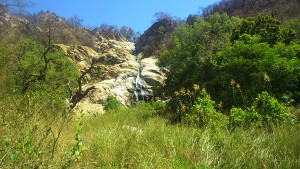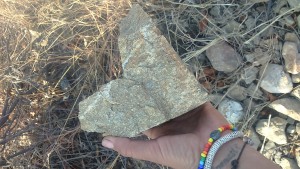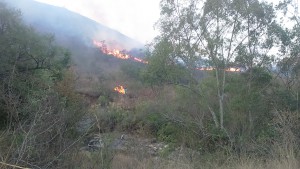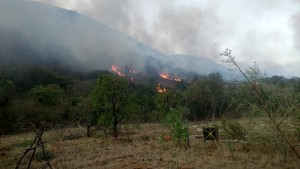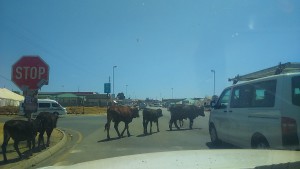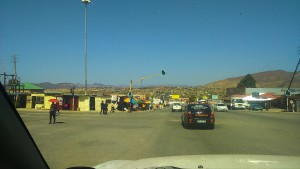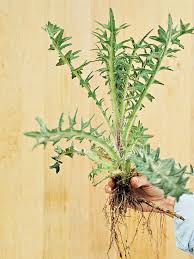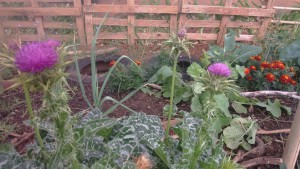Monthly Archives: October 2016
A pseudoscience is a belief or process which masquerades as science in an attempt to claim a legitimacy which it would not otherwise be able to achieve on its own terms; it is often known as fringe- or alternative science. The most important of its defects is usually the lack of the carefully controlled and thoughtfully interpreted experiments which provide the foundation of the natural sciences and which contribute to their advancement. A very good example of this Pseudoscience in farming is found in a variety of compost recipes, in my opinion.
Of course, the pursuit of scientific knowledge usually involves elements of intuition and guesswork; experiments do not always test a theory adequately, and experimental results can be incorrectly interpreted or even wrong. It is for this reason, that I did an experiment in a bucket, based on a compost recipe and also 6 large piles of similar layering in the compost and have taught staff on the farm to record the process. Critical thinking is an essential element of science. It is quite a challenge to convert these pseudo-scientific ways of farming into legitimate science.
Firstly, going out to as far as we can reach, up the mountain, off grid and away from most so called western ways of civilization, and creating an awesome edible and medicinal garden is not like planning and doing a garden in a urban or more common kind of rural setting. This post is about a two week period at the beginning of October 2016 on the farm. A good example of more pseudoscience in farming is really simply just looking at the bigger picture of what I am sharing at some point, in my opinion.
I arrived on a Monday, from the hot, sunny Johannesburg to a cold, freezing mountaintop on the farm, due to snow in the KZN region. I made a comfortable place to sleep on my deck in my tent. This cold weather persisted for the first few days. I looked at the progress, and it seemed lacking, and quickly learnt that a cow was jumping our fence in two areas (I was told this is unusual, unless its a Brahman cow). I also learnt that human capacity, energy, time management and ability always outweigh each other – making it seem even less useful to me to stress and freak out when things are not up to my standard or where I need them to be. At some point every farmer must acknowledge the fact that either we need more patience or more staff. Yet, it is also a matter of knowing everything on the farm, in order to manage the time and capacity of the workers more efficiently. It is also a matter of getting my staff to understand this concept at times.
In my own learning, I take long walks around the farm, I make notes and drawings. I discuss priorities and time management with my workers, and we come up with solutions we agree we can manage. In most of these rural off grid settings, the people have lived without running water and electricity in their homes all their lives, education and language is also lacking. In my opinion, these are our true earth children, because they are very happy despite the poverty, and I also have not exactly sat in a classroom or university studying… making the need for education another pseudoscience in my opinion. A world of information does really exist outside a classroom and also within us all ![]()
Here are some pics of my first few walk – abouts on this trip. The pics tell a story too, in their own sequence… the story of the fire after the cold weather, and the rains, a trip to Elukwatini, and more…
That is Aunty Hilda, likes to be called Hildee instead ![]() who drives me to the farm and all over, and allows me to practice my driving. One fantastic woman of note.
who drives me to the farm and all over, and allows me to practice my driving. One fantastic woman of note.
I usually climb up the waterfall to see the farm from above, and check on one of our water sources. Everything here is gravity fed.
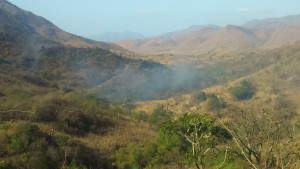 Smoke started to grow … and I picked up a heart shaped rock, headed down from the lookout and found staff preparing to fight fire.
Smoke started to grow … and I picked up a heart shaped rock, headed down from the lookout and found staff preparing to fight fire.
This random man came by with his horse through the fiery path… the dog is Captain, the dog of the mountain ![]() he belongs to no one and spends time all over – over hundreds of acres of land. Needless to say, Captain spent the night after the fire.
he belongs to no one and spends time all over – over hundreds of acres of land. Needless to say, Captain spent the night after the fire.
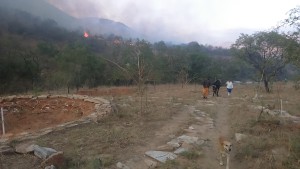 Note that in farming, if one does not reckon in such things happening and time management goes completely out the window.
Note that in farming, if one does not reckon in such things happening and time management goes completely out the window.
We had a storm the next evening, which was quite surreal for me because I had a migraine type headache throughout it all… and then a trip to Elukwatini followed.
So much actually happens on these trips that it is not possible to sum up in a blog post, which is why I have not recorded this as much as my other projects.
We also built a shade tunnel for some plants, had to repair a pipe, and the side of the reservoir, finish off the chicken fence and gates…. I could probably write another hour, in fact.
At some point I will get a better laptop and be more diligent in sharing this journey into the pseudoscience of farming ![]()
Most people confuse a common Thistle weed with Milk Thistle. The second image is a Milk Thistle, I have it growing in my garden, and have been diligently harvesting seed and trying to multiply my seed over the past two years. I will be planting these seeds in trays on the farm this week, while an awesome team of workers from Vlakplaas construct a tunnel for them to germinate in.
Most people also do not know what to do with Milk Thistle when it is not in a capsule. I make tea alot so I usually have some ![]() Crushed leaves and seeds in a muslin bag, steeped in hot water for five minutes, with honey or anistar for flavor is actually quite an awesome cup of tea. Ive added mint to mine too, at times.
Crushed leaves and seeds in a muslin bag, steeped in hot water for five minutes, with honey or anistar for flavor is actually quite an awesome cup of tea. Ive added mint to mine too, at times.
You can also sprinkle the seed powder on your burgers, smoothies, and salads. I think only my more adventurous readers will try milk thistle leaves in a salad – do note the thorny edges and remove them before adding to your salad. I have also seen Milk Thistle available in capsule form at Dischem.
The medicinal use of Milk Thistle is mainly for the liver, gall bladder, skin, helpful in treatment of liver cancer – known to kill carcinogenic cells.
Let me know if you want to try some by emailing nntreasure@gmail.com
